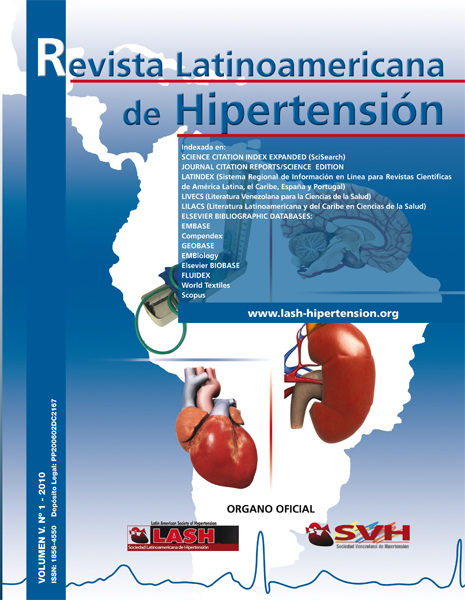Estatinas y factor de necrosis tumoral alfa
Keywords:
tumor necrosis factor alpha, statins, choles¬terol, cardiovascular risk, factor de necrosis tumoral alfa, estatinas, colesterol, riesgo cardiovascular.Abstract
Las Estatinas son elaboradas para eliminar el riesgo cardiovascular al reducir LDL (colesterol de baja densidad), pero el evento coronario agudo sigue ocurriendo en 40% de las personas que presentaban colesterol total por debajo de lo normal. El objetivo de este estudio fue evaluar si dentro de los efectos pleiotropicos de las estatinas se podía reducir el FNTα y con ello probar sus efectos antioxidantes e inflamatorios. Se evaluaron 21 pacientes, con hipercolesterolemia al ingreso y después de 8 semanas de recibir 40 mg de Simvastatina, se le realizó: Colesterol, Triglicéridos, HDL, LDL, Glicemia, Creatinina, Acido Úrico, PCR, IL-1, IL-6, IL-10, TNFα, SOD y 8-Isoprostanos F2. Se utilizo la prueba t de student. La estatina, mas allá de disminuir LDL es eficaz en disminuir variables que participan en la respuesta oxidativa e inflamatoria, mecanismo fisiopatologico constantes en las enfermedades cardiovasculares y metabólicas.
Statins are developed to eliminate the risk of heart disease by reducing LDL (low density), but the acute coronary event still happened in 40% of those who had total cholesterol below normal. The aim of this study was to assess whether in the pleiotropic effects of statins could reduce TNF α and thus prove its antioxidant and inflammatory effects. We evaluated 21 patients with hypercholesterolemia on admission and after 8 weeks of receiving 40 mg simvastatin, we evaluated: Cholesterol, Triglycerides, HDL, LDL, Glucose, Creatinine, uric acid, CRP, IL-1, IL-6, IL-10, TNF, SOD and 8-isoprostane F2α. T test was used to student. The statin beyond to reduced LDL is effective in decreasing variables involved in the inflammatory response, consistent pathophysiological mechanism in cardiovascular and metabolic diseases.

